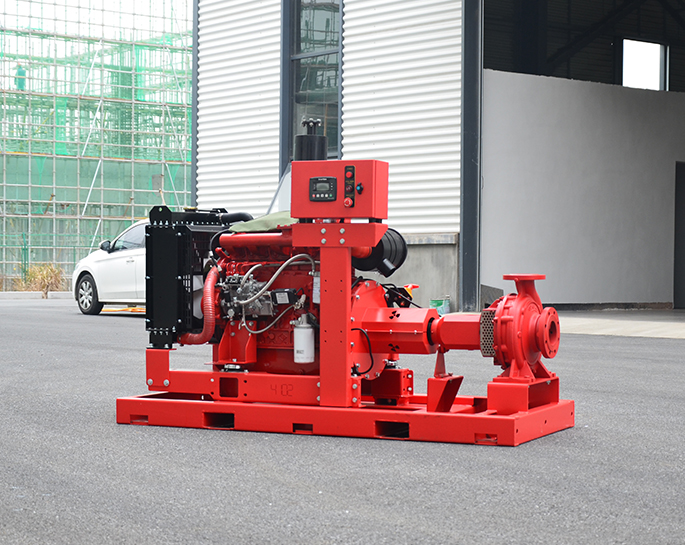How can you improve the energy efficiency of a fire pump system?
Jun 07, 2024
Share:
Improving the energy efficiency of a fire pump system can involve various strategies aimed at reducing energy consumption while ensuring the system's effectiveness. Here are some suggestions:
1. **Variable Speed Drives (VSDs)**: Install VSDs on pumps to match the flow rate with the actual demand. This allows the pump to operate at optimal speeds, reducing energy wastage during periods of low demand.
2. **Efficient Pump Selection**: Choose pumps that are specifically designed for energy efficiency, such as those with high-efficiency motors and impellers. Selecting the right pump size for the application can also prevent oversizing, which can lead to energy waste.
3. **Regular Maintenance**: Implement a proactive maintenance schedule to ensure that pumps are operating at peak efficiency. This includes tasks such as lubrication, alignment, and cleaning of components, which can all contribute to energy savings.
4. **Pressure Regulation**: Install pressure regulating valves or controls to maintain the required pressure in the system without overworking the pump. This prevents excessive energy consumption during periods of low demand.
5. **Insulation**: Insulate pipes and components to minimize heat loss and reduce the energy required to maintain the temperature of the fluid being pumped.
6. **Optimized System Design**: Design the system layout to minimize friction losses, reduce the number of bends and fittings, and optimize pipe sizing. This can improve overall system efficiency and reduce the energy required to pump water through the system.
7. **Energy Monitoring and Control**: Implement an energy monitoring and control system to track energy usage in real-time and identify opportunities for further optimization. This can involve the use of sensors, meters, and automated controls to optimize system performance.
8. **Training and Awareness**: Provide training to personnel on energy-efficient operating practices and the importance of energy conservation. Encouraging employees to be mindful of energy usage can lead to additional savings over time.
By implementing these strategies, you can significantly improve the energy efficiency of a fire pump system while ensuring reliable operation in emergency situations.

1. **Variable Speed Drives (VSDs)**: Install VSDs on pumps to match the flow rate with the actual demand. This allows the pump to operate at optimal speeds, reducing energy wastage during periods of low demand.
2. **Efficient Pump Selection**: Choose pumps that are specifically designed for energy efficiency, such as those with high-efficiency motors and impellers. Selecting the right pump size for the application can also prevent oversizing, which can lead to energy waste.
3. **Regular Maintenance**: Implement a proactive maintenance schedule to ensure that pumps are operating at peak efficiency. This includes tasks such as lubrication, alignment, and cleaning of components, which can all contribute to energy savings.
4. **Pressure Regulation**: Install pressure regulating valves or controls to maintain the required pressure in the system without overworking the pump. This prevents excessive energy consumption during periods of low demand.
5. **Insulation**: Insulate pipes and components to minimize heat loss and reduce the energy required to maintain the temperature of the fluid being pumped.
6. **Optimized System Design**: Design the system layout to minimize friction losses, reduce the number of bends and fittings, and optimize pipe sizing. This can improve overall system efficiency and reduce the energy required to pump water through the system.
7. **Energy Monitoring and Control**: Implement an energy monitoring and control system to track energy usage in real-time and identify opportunities for further optimization. This can involve the use of sensors, meters, and automated controls to optimize system performance.
8. **Training and Awareness**: Provide training to personnel on energy-efficient operating practices and the importance of energy conservation. Encouraging employees to be mindful of energy usage can lead to additional savings over time.
By implementing these strategies, you can significantly improve the energy efficiency of a fire pump system while ensuring reliable operation in emergency situations.


.png)
.png)

.png)


